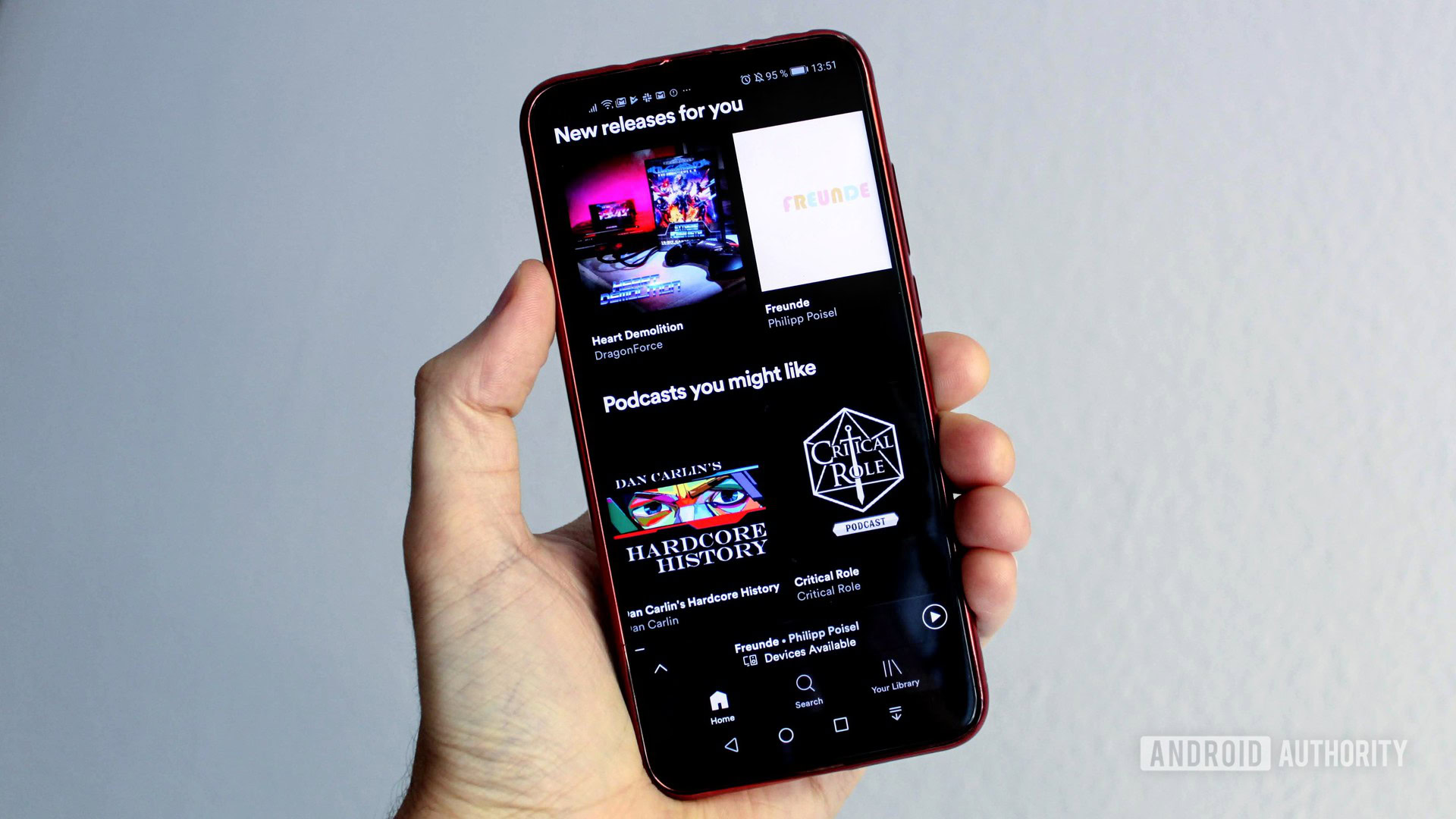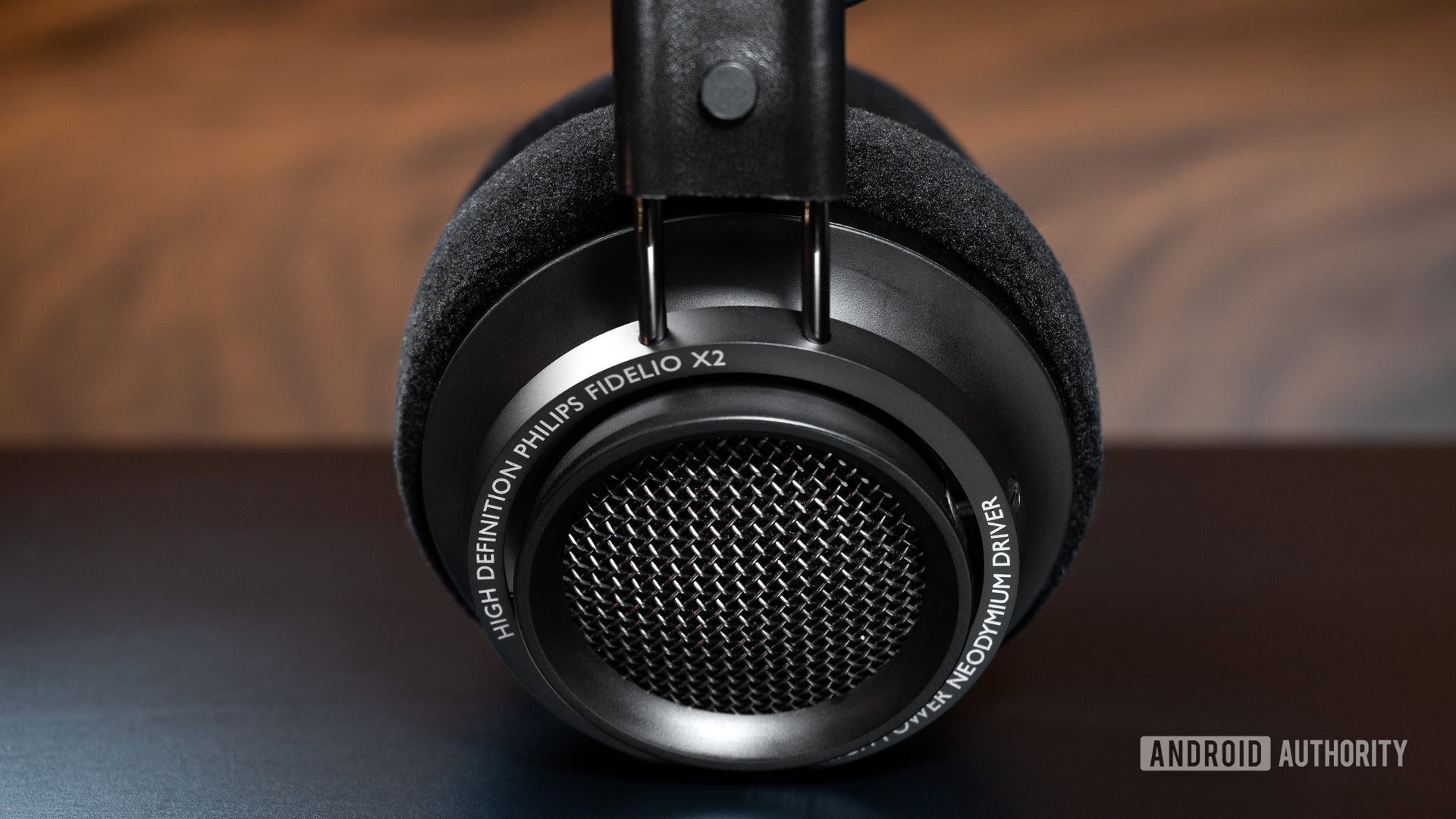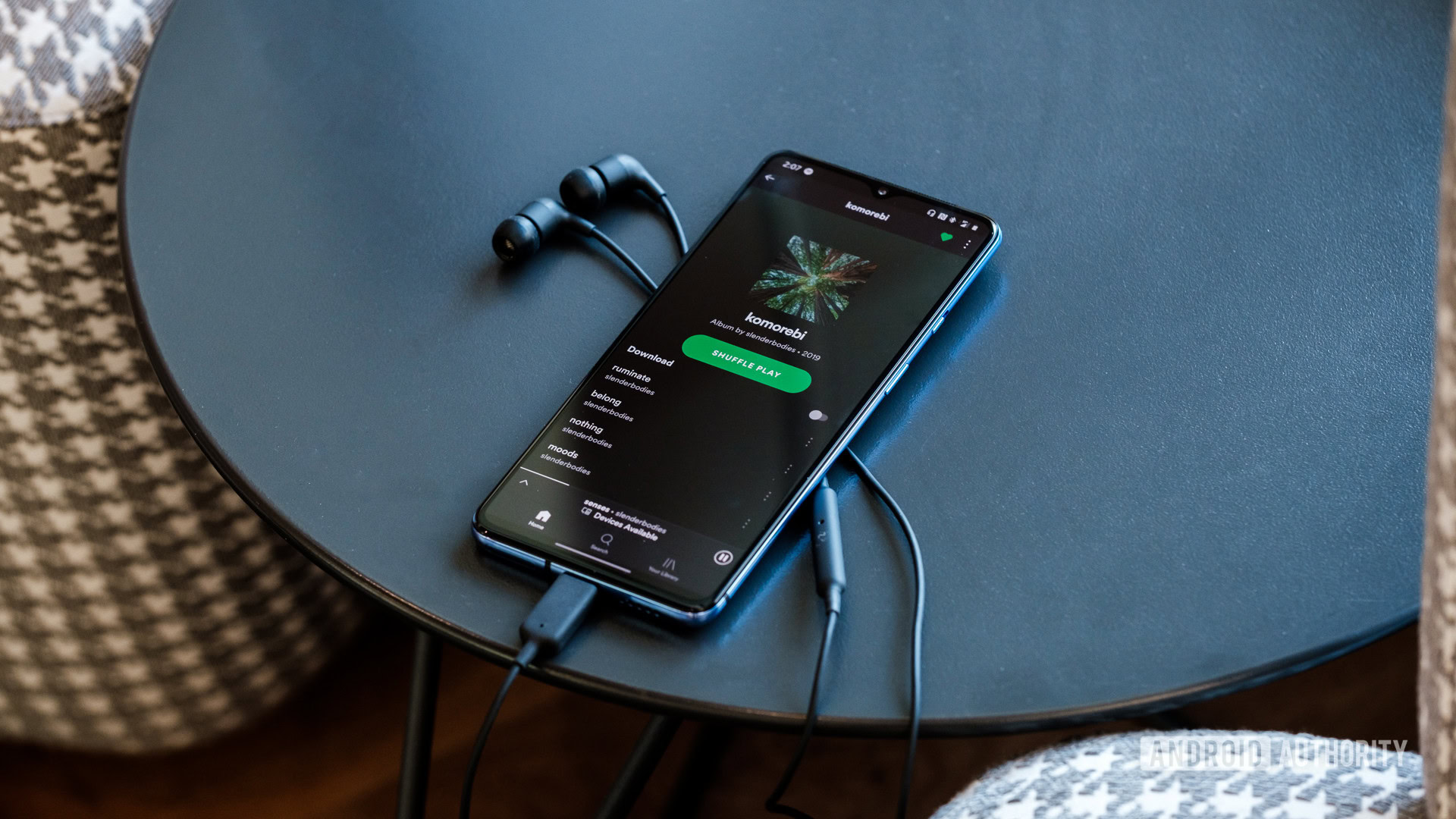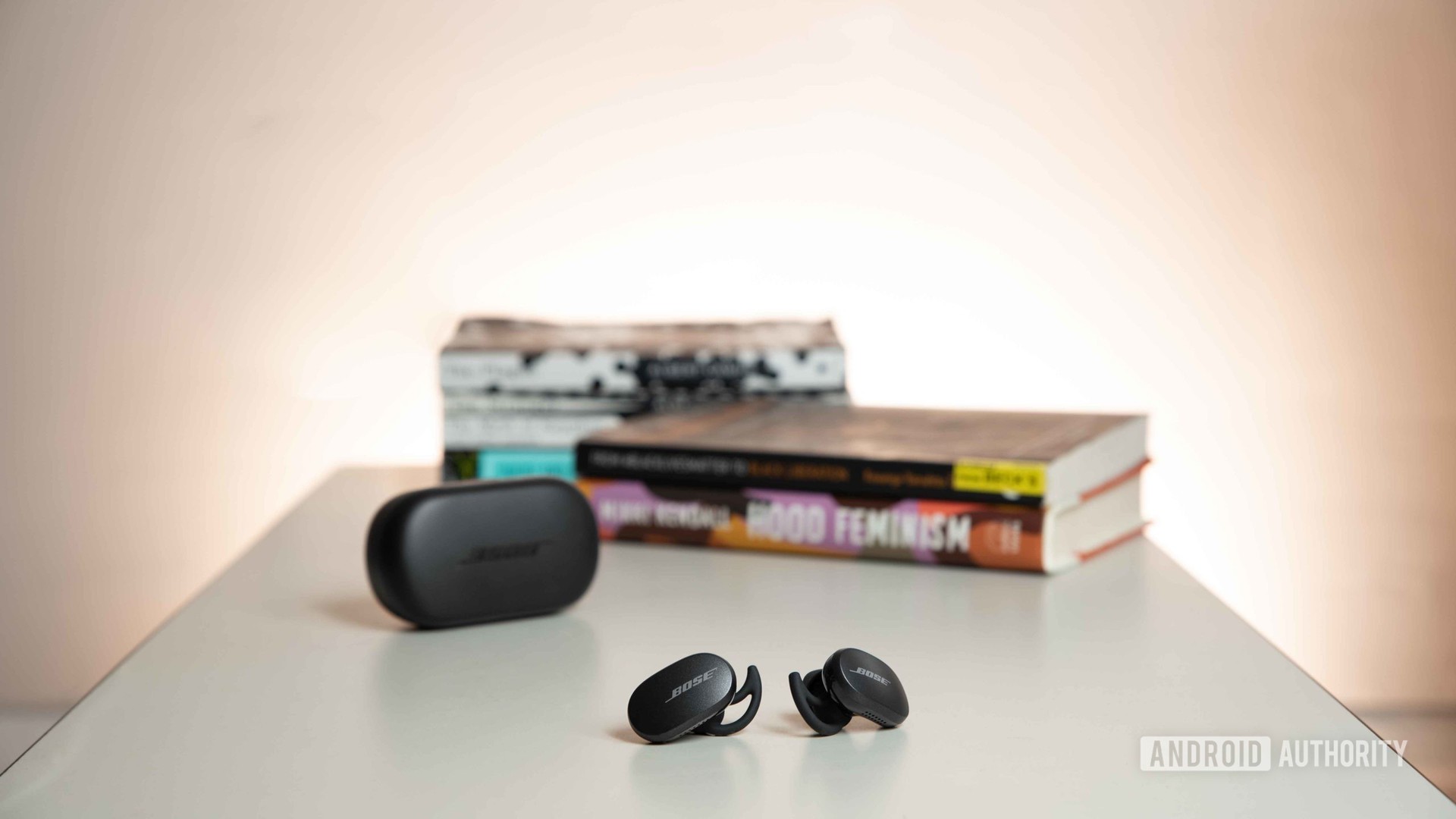Affiliate links on Android Authority may earn us a commission. Learn more.
Spotify HiFi: Everything you need to know about the lossless streaming service
Published onApril 19, 2023

Spotify caught the world’s ear when it announced Spotify HiFi, a new lossless streaming tier set to compete against Amazon Music, TIDAL, and Apple Music. This announcement comes after years of belabored requests from artists and listeners alike. We know that Spotify’s lossless audio tier will work on all devices, Spotify Connect smart speakers included, but the company generally keeps its cards close to its chest. More than two years after its announcement, where is Spotify HiFi?
According to The Verge, lossless audio is coming down the pike, but the date is still unknown. Purportedly, Spotify HiFi has been waiting in the wings for over a year, ready for launch. Originally, a Spotify HiFi subscription was to cost more than the standard plan, but Apple bungled Spotify’s plan by offering lossless audio without raising the price of its streaming service. We can expect Spotify HiFi to roll out with a plan that includes Dolby Atmos-powered spatial audio playback similar to Amazon Music and 360 Reality Audio.
The lossless tier’s pricing is shrouded in mystery too, though one may surmise that the cost of Spotify HiFi will directly compete with TIDAL HiFi and Amazon Music’s rates of $19.99/month and $9.99/month (Prime subscribers), respectively. This upgraded option will widen the gap between Spotify and YouTube Music.
Will you upgrade to Spotify HiFi?
Why does lossless audio matter?

Lossless compressed audio formats like FLAC and ALAC matter because they retain all data bits while being storage-efficient relative to uncompressed formats like WAV and AIFF. This means every audible (and even inaudible) note is transmitted from your source device to your wired headphones. Spotify Premium streams in 320kbps Ogg Vorbis, which is perfectly fine for casual use but leaves more serious music fans yearning for more.
Listeners aren’t the only ones who benefit from Spotify HiFi as musicians want their music to be heard as faithful to the original recording as possible. Our sister site SoundGuys spoke with Chicago-based musician Rymo. who stated that lossless audio brings the listener closer to the master recording, which was once a rarity in the age of streaming.
What does Spotify HiFi mean for the music streaming industry as a whole?

Spotify is among the most popular music streaming services, and its pivot into lossless streaming will democratize high-resolution audio. Sure, Amazon Music, Deezer, and Qobuz exist as top-notch lossless streaming services, but they don’t quite have the same draw as Spotify and Apple Music. Apple dropped a lovely surprise into the laps of audio enthusiasts when it announced its high-resolution upgrade at no extra cost. Amazon made the defensive move to bundle its Music HD tier into Amazon Music at no extra cost.
The streaming service providers may continue to compete, reducing the pay-to-play cost, and ultimately benefit listeners who don’t want to spend upwards of $19.99/month on lossless audio. High-resolution streaming seems to be in the cards for every major provider, though we’ll see if YouTube Music offers this in the future.
What are the drawbacks of Spotify HiFi?
Remember how we said that lossless audio transmits way more data than lossy audio (e.g., Spotify Premium streaming rates)? Well, that has its costs, namely cellular data and native storage.

While compressed lossless files are much smaller than their uncompressed counterparts, they still eat up much more data than lossy audio files like MP3 and AAC. If you have a limited cellular data plan, you must know how often you stream over your network. Otherwise, you may incur some stomach-dropping fees at the end of the month. Downloading audio files for offline listening is a great way to combat overage charges, but you might quickly run out of space on your smartphone. This, of course, depends on your phone’s storage capacity and how many apps, videos, and images you already house on the device.
Another thing to consider is your headset. Do you exclusively use true wireless earbuds or Bluetooth headphones? If so, then you won’t even benefit from the audio quality increase: Bluetooth’s bandwidth is limited and can only transmit so much data at once. Even if you use a Lightning-to-3.5mm dongle adapter with an iPhone for wired playback, you may not receive the full benefit due to data loss during the re-digitization process.
Even if you have unlimited storage and the best wired headphones, amp, and DAC setup, you might be unable to hear the difference between a 320kbps Ogg Vorbis file and a lossless audio file. Unfortunately, many of us experience hearing loss over time. This natural process is only expedited by certain environmental factors (e.g. a job in construction or attending too many concerts without earplugs). If you know you live with hearing damage, then it’s unlikely that any lossless streaming service will be worth it.
These are just a few minor things to be aware of before you invest in a high-resolution streaming service like Spotify HiFi.
Should you get Spotify HiFi?
Again, we don’t know much about Spotify HiFi regarding its pricing and availability. However, if Spotify follows Apple and offers its HiFi option at no extra cost, you have nothing to lose here. However, if the company charges something like $14.99/month for the HiFi service, you may need to calculate the cost-benefit analysis.
Regardless of what you decide to do when Spotify HiFi makes its way to smartphones everywhere, the fact remains that this is generally a good thing for music. All this buzz that surrounds lossless music streaming services makes the intricacies of audio a bit more accessible to the layperson.